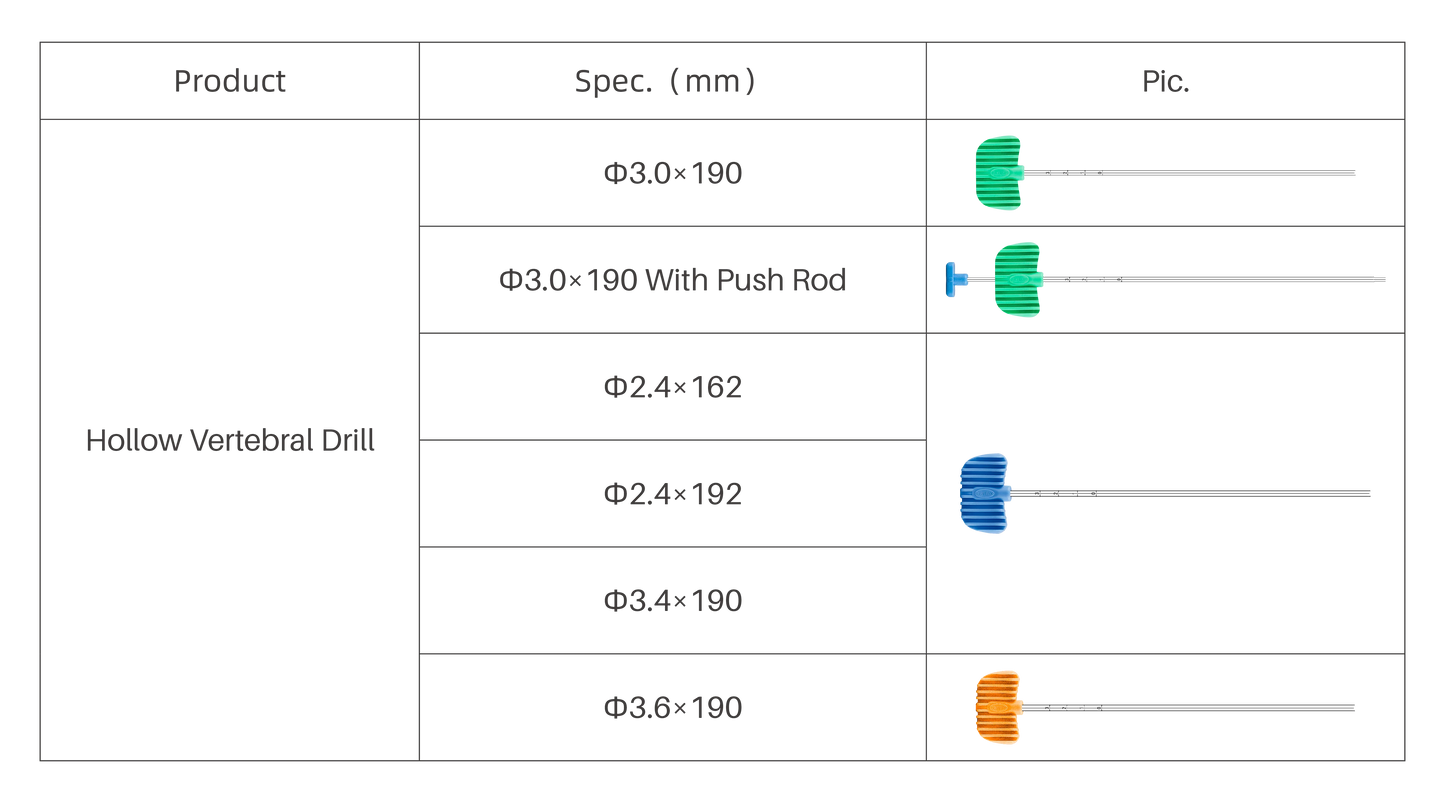1
/
of
5
Hollow Vertebral Drill
Hollow Vertebral Drill
Regular price
$15.00 USD
Regular price
Sale price
$15.00 USD
Unit price
/
per
Couldn't load pickup availability
Product Overview
The Vertebral Forming Unitized Surgical Instruments are newly developed in collaboration with experts in orthopedics and radiology. They are intended for the surgical treatment of benign and malignant vertebral tumors as well as osteoporotic vertebral compression fractures, via percutaneous vertebroplasty (PVP) and percutaneous kyphoplasty (PKP).
The instruments feature a rational structure and are designed for ease of operation and reliable clinical performance.
The Hollow Vertebral Drill is available in multiple diameter specifications and depths tailored for vertebroplasty. It has been specifically developed to meet intraoperative biopsy requirements.
Product Features
1. Multiple diameter options – Designed to accommodate different vertebral anatomies and biopsy needs during vertebroplasty.
2. Anatomical compatibility – Various diameters allow precise navigation through cervical, thoracic, or severely compressed vertebrae while avoiding critical tissues and nerves. This ensures safe, efficient sampling from the lesion site and provides essential evidence for clinical diagnosis.
Clinical Use
• During vertebroplasty, the hollow vertebral drill is inserted through the working cannula when a biopsy is required.
• With the aid of the plunger, the collected biopsy tissue can be expelled and subsequent surgical steps may proceed.
Scope of Application
Indicated for the treatment of:
• Benign and malignant vertebral tumors
• Vertebral compression fractures associated with osteoporosis
Precautions
• Refer to the official Instructions for Use (IFU) for detailed guidance.
• Images are for reference only; actual product configuration may vary.
• Instruments must be used in conjunction with acrylic bone cement.
Contraindications
Use is contraindicated in patients with:
• Spinal infections (e.g., osteomyelitis, epidural cysts)
• Vertebral body collapse exceeding 70%
• Severe spinal cord compression or secondary spinal canal stenosis at the affected vertebral level
• Destruction or defect of the posterior vertebral wall
• Severe cardiopulmonary dysfunction, coagulation disorders, sepsis, or other conditions unsuitable for surgery
Share









